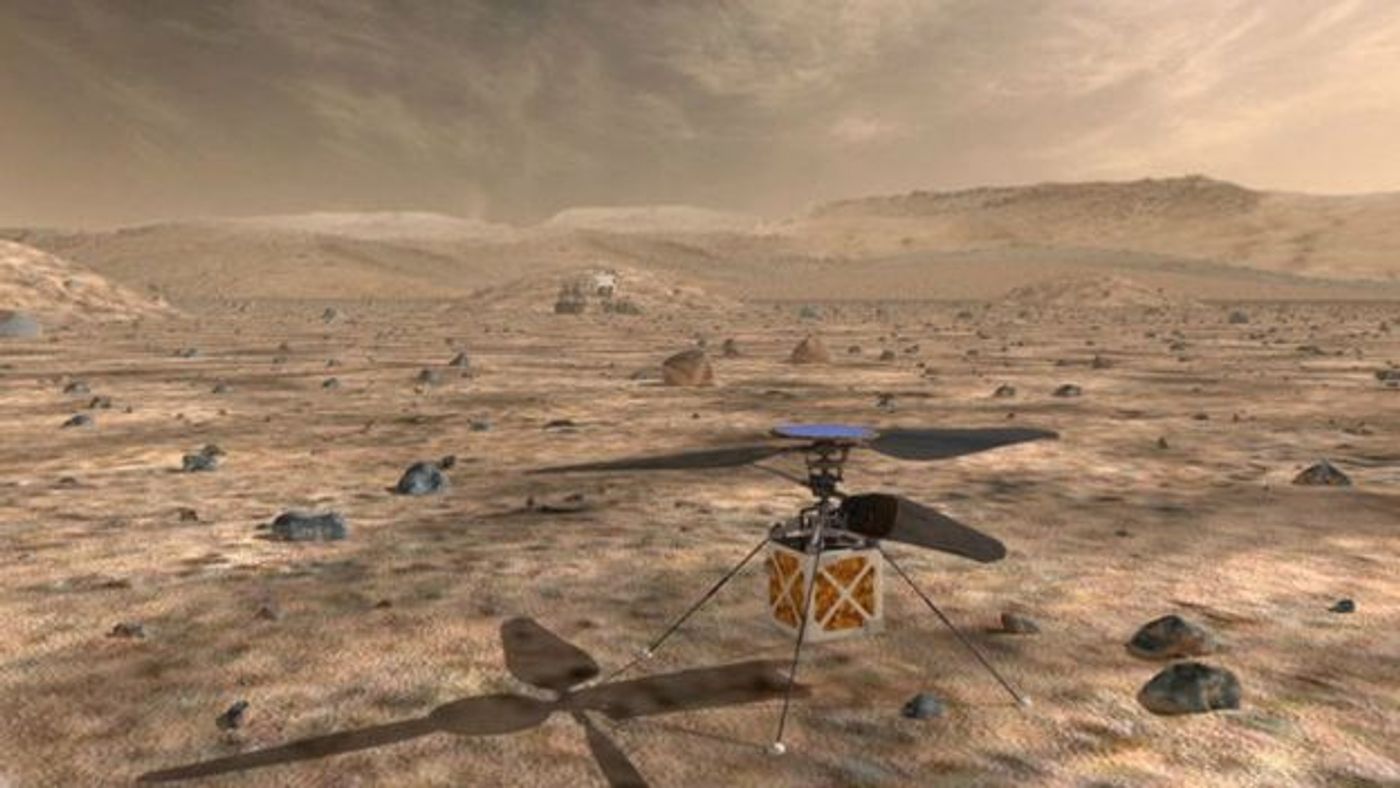NASA Wants to Send a Helicopter to Mars
We’re used to seeing airplanes and helicopters in the sky on Earth, but scientists still aren’t entirely sure whether the same forms of air travel would be feasible on other planets in the solar system, like Mars.
To find out, NASA wants to send a little drone-like helicopter to the red planet along with the upcoming Mars 2020 rover. This would enable the space agency to test the Earth-proven flight technology in an atmosphere with polarizing physical properties.
Image Credit: NASA/JPL-Caltech
Mars’ atmosphere is about 100 times thinner than Earth’s, so NASA engineers will compensate by adjusting the dynamics of the Martian helicopter’s operation so that it can still take flight.
One of the compensations involves slimming the helicopter’s size so that it’s comparable to a softball, and it will only weigh about four pounds. Another compensation encompasses a harder-working motor, which needs to spin the blades at a rate of about 3,000 revolutions per minute (RPM); that’s nearly ten times faster than the blades of a traditional Earth-worthy helicopter.
"The idea of a helicopter flying the skies of another planet is thrilling," said Nasa Administrator Jim Bridenstine.
"The Mars Helicopter holds much promise for our future science, discovery, and exploration missions to Mars."
Related: NASA wants to send a submarine to explore Titan's methane-based oceans
Such an idea would push Martian scientific research forward at a significant rate. Air-based vehicles can travel more quickly than rovers, and this would let NASA target the most intriguing places for Martian rovers to navigate to more quickly.
But because Mars is so distant from Earth, NASA engineers won’t be able to control the helicopter remotely. Instead, it will need to operate autonomously, and solar panels will keep its batteries charged in between flights.
After it flies away for 30-90 seconds to collect information, it would return to the Mars 2020 rover to downlink the data it collected for transmission to scientists on Earth. Sounds pretty cool, right?
Related: Watch these guys fly beside a massive A380 airplane with personal jetpacks
NASA isn’t 100% certain that the concept will work, so it’s being classified as a “high-risk” mission. But even if it doesn’t work out as planned, the Mars 2020 rover can continue doing its own thing.
It should be interesting to see how the mission pans out and whether a helicopter-like autonomous vehicle will help the Mars 2020 rover explore the red planet’s surface. With a little luck, anything is possible.
Source: NASA









